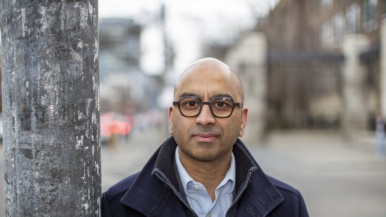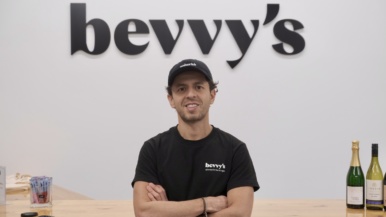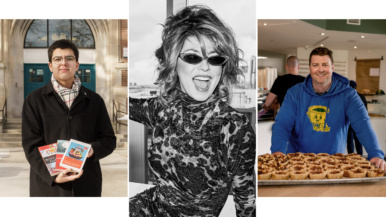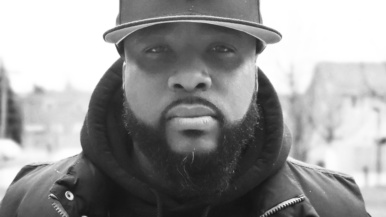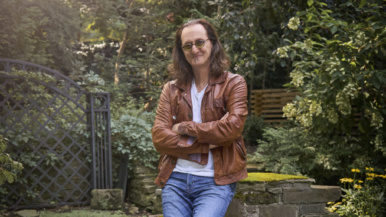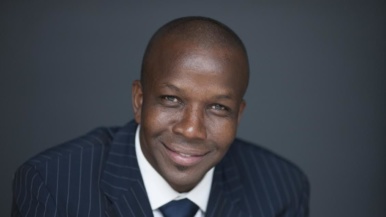Q&A: Attiya Khan, the filmmaker who confronted the man who abused her in a new documentary, A Better Man
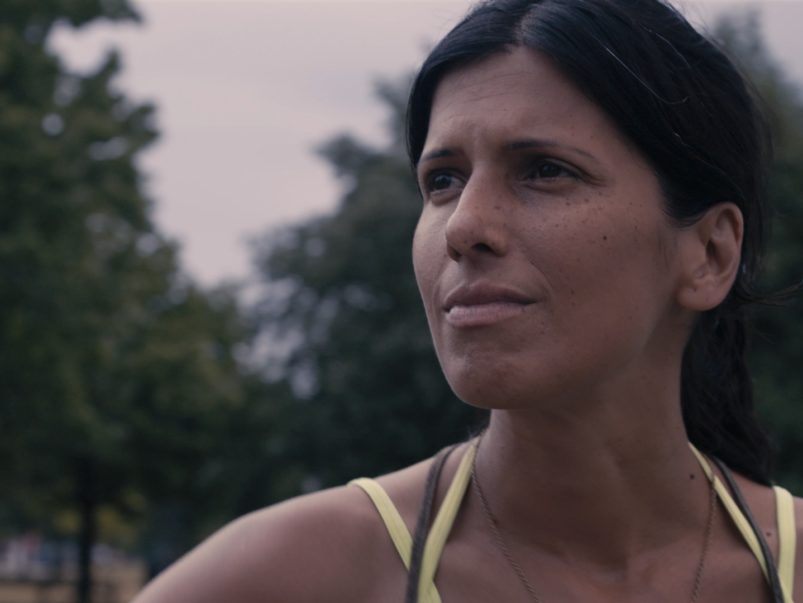
In her first real romantic relationship, filmmaker Attiya Khan’s boyfriend beat her on a near-daily basis for two years. Her experience was shockingly commonplace: one quarter of all violent crimes reported to police in Canada take place in the context of intimate partnerships, and one Canadian woman is killed by her male partner approximately every six days. Twenty years after leaving that relationship, Khan sat down with Steve, the man who had traumatized her. She filmed that first conversation in April 2013, and quite a few others—mostly facilitated by therapist and anti-violence counsellor Tod Augusta-Scott—to turn her challenging experience into a brave, surprisingly hopeful documentary, A Better Man. Before the film’s debut at Hot Docs, we asked Khan a few questions by email.
In the film, you mention how you’d run into Steve around Toronto a few times. What was it like to see him for the first time since you’d left him?
It had been about two years. I saw him one day in the Annex. I was out walking, and I could see Steve coming. We locked eyes and I remember he said, “Hello, Attiya.” I was so terrified that I couldn’t speak. I almost fainted. For quite a while after, I had nightmares, and couldn’t turn a corner on the street without being afraid I’d run into him.
Why did you make this documentary?
I’ve built my career as a professional advocate for women who have experienced domestic violence. I’ve always loved documentaries, and when the idea came to me, I had no hesitation. I decided to make this documentary because I can’t handle the intolerably high prevalence of domestic violence, and I’m tired of hearing non-stop stories of pain and hopelessness. I needed to find a creative way to approach the issue.
Did you have to convince Steve to agree to have the conversations filmed?
Steve was definitely shocked when I raised the idea of filming our conversations, but he was never against the idea. Even the first time we talked about it, I could see he was interested. He knew the value that our conversations might have for other people who are using or experiencing violence. He just needed some time to consider the idea and make sure that he was ready to talk about our relationship openly. I’m really glad he took that time—this kind of dialogue can’t be rushed.
You were both incredibly young when you dated—you moved in together while you were still in high school. What did your parents think?
The factors behind Steve and I moving in together are complex. We had both come into this relationship facing unique challenges in our lives. After I moved in with him, I had minimal contact with my family.
In the film, you and Steve revisit the apartments where you two had lived in together in Ottawa. We see how upsetting it is for you to stand on the street and look at the building where so much happened, and we see Steve wrestling with the past and trying to comfort you in the present. Why was that important for you?
I had a gut feeling that going back to the places where he had hurt me would help me in some way. I’d found visiting Ottawa very difficult after living there with Steve; I have so many painful memories there. But I have family in Ottawa and I needed find a way to be there without feeling overwhelmed and filled with dread. Returning there with Steve was incredibly intense. It felt like a thunderstorm was happening inside my body. It was meaningful to feel Steve’s gentleness toward me there. It didn’t erase my violent memories, but it did begin to bring some sense of relief from the trauma I’ve been carrying around.
In the film, Seth, a later partner who you knew while you were dating Steve, says he felt like he didn’t really know what to do—he offered support and tried to befriend Steve so you could have a bit more space from him. What was it like to talk to him about the role he played in helping you get out?
Intentionally spending time with a person who uses violence probably seems counter-intuitive, but it was actually exactly what I needed. Even just by listening to me, Seth’s interventions were literally life-saving. It was necessary to hear from people that I did not deserve the violence Steve inflicted on me, that I could be loved in caring, non-violent ways. I found talking to Seth about this relatively easy.
There are many instances in the film where we see you remembering all the people who did nothing: the teachers at your school, the neighbours who might have seen you run outside and scream for help on the street. Do you think the film gives viewers tools for understanding how or when to help?
When people looked the other way, it only made me feel more alone, more invisible. It also strengthened my sense that I deserved the violence, or that violence is just what happens in relationships. People often picture an intervention as some heroic act in a moment where physical violence is immediately happening or about to happen. But intervention can also happen before or after violence occurs, by challenging the kinds of attitudes that can lead to domestic violence, or by listening to and supporting the person who was hurt, or encouraging the person who used violence to change their behaviour.
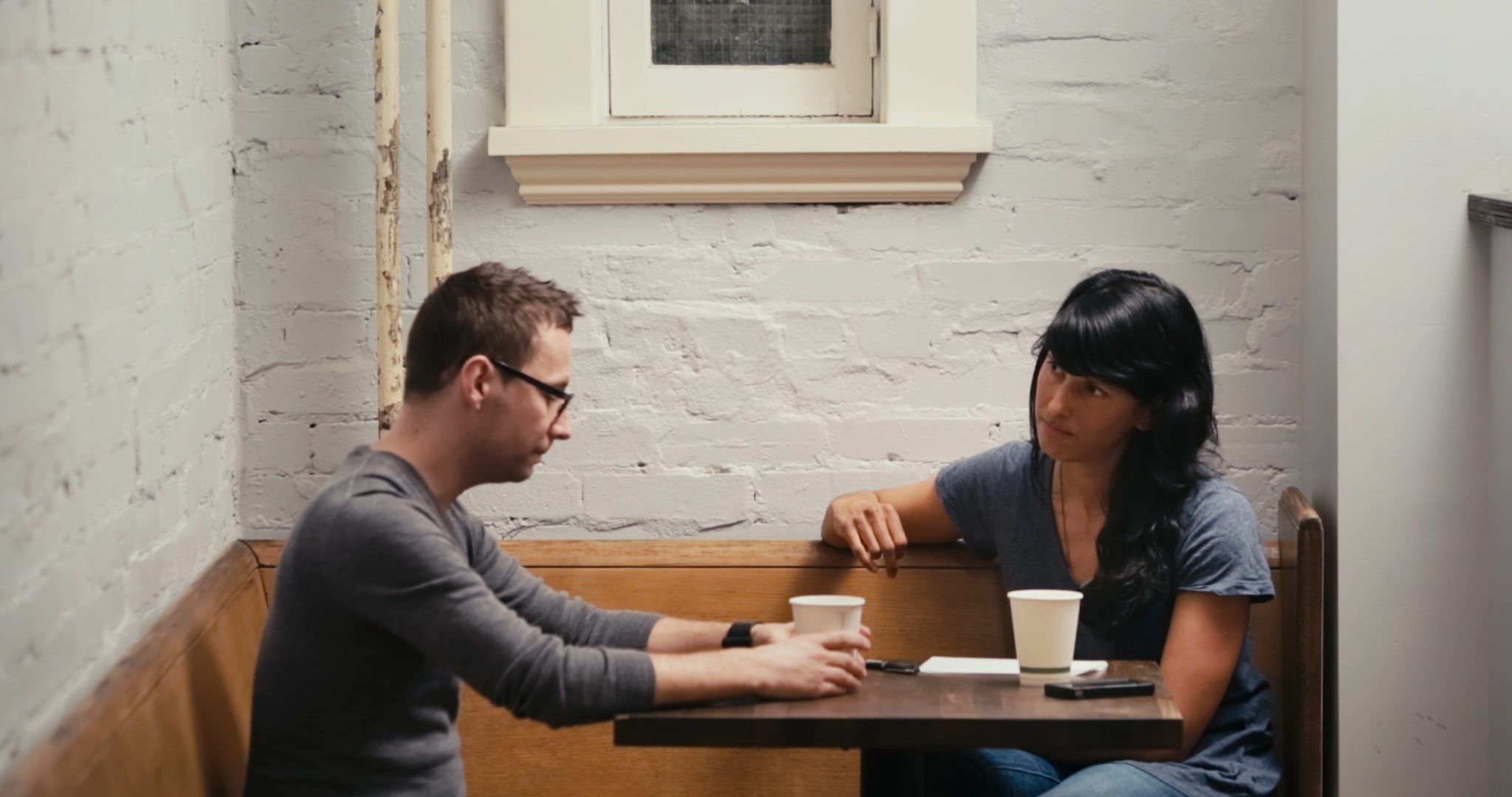
It’s hard to watch Steve come to realize how badly he hurt you. Why was it important to depict, in an empathetic way, how Steve became accountable for what he did?
It’s hard to think that violent people are just that: people. Thinking of them as monsters discourages them from admitting that they have used violence and taking responsibility for it, and it makes it tempting for people whose friends, co-workers or siblings are using violence to turn a blind eye—how could this person they know and love be a monster? Love can and often does coexist with the violence. I have had all kinds of feelings about Steve, and many of them have not been sympathetic. But as someone who once loved him, I can’t help but see him as a human being. It was important that the film show Steve in a way that helps other people who use violence to see themselves in him. When Steve agreed to be part of the film, he said that if he could convince even one man not to choose violence, it would be worth it.
There are so few nuanced depictions of people who have lived through domestic violence—we often see stories that are narrowed down to fit conventional “survivor” or “victim” narratives. Did you want the film to challenge that?
Absolutely! Every person who has experienced violence has a different story. For example, as a woman of colour, I know how important it is to see and hear stories about our experiences and in our own words. One of the forms of abuse that Steve used against me was verbal abuse, and some of the words he used were racist. This racism is part of my trauma and it’s something I rarely see talked about in broader discussions about intimate partner violence.
Have you reconciled with Steve?
I have. I am still angry with him for the violence he inflicted on me, but I also respect him because of his involvement in this film. I noticed while making this film that Steve never blamed me for the abuse or minimized his abusive behaviour with me. I did not expect him to take responsibility so quickly for what he did to me. And this meant a lot.
What is your relationship with Steve like now that the film is done?
While we were filming, Steve and I would fall in and out of touch. After each shoot, he would fall off the map for a little while, which makes sense to me–those conversations were really intense and took a lot out of both of us. A bit of space might have been necessary to process everything. Since wrapping production, we’ve stayed in contact leading up to the premiere. Putting our history out there so publicly is a huge step, so it’s been really important to me to make sure we’re both well-supported, with the lines of communication staying open. As for what our relationship might look like going forward, I think we’ll stay on good terms.
One of the most moving parts of the doc is when you celebrate your 23rd anniversary of having escaped an abusive relationship. Why did you want to celebrate it publicly?
My 10th anniversary was the first time I had a party to celebrate my escape. Before that, I would go to a very low and painful place on that date. I remember thinking that maybe, if I used that date to acknowledge that I survived, then it made more sense to celebrate than to mourn. These parties were very empowering. I realized that I was not the only one who wanted to share her story, and every year more of my friends and family started to share their experiences of abuse. You’d think it would be a hard sell to invite people to a party that centres on talking about abuse, but if you balance it with cake, champagne and dancing, it can turn into a pretty good time!
How do you think this film will make people consider the possibility of changing the behaviour of men who abuse their partners?
My goal with the film is to encourage honest, challenging conversations about domestic violence. I’d like the film to offer hope. By helping men to learn ways of stopping their abuse, we are in turn helping the people they hurt.
What was the most surprising thing about making this doc?
The fact that I am starting to heal. Since having these conversations with Steve, I am now sleeping better. I can take bigger fuller breaths. I feel lighter. I’m not holding fear in my body like I had been. I’m not always anticipating the possibility of violence. I’m so much happier. I never thought that our conversations would lead to this.
